Egypt’s monopoly on pyramids is like France’s on wine. If you never leave France you’ll be missing out on some of the world’s best wine, and if you only visit Giza you’re casting a pretty small pyramid net. Some of the most breathtaking pyramids are nowhere near Egypt and don’t even look like conventional pyramids. Whether it’s Iraq’s Ziggurat of Ur, which evokes a distinctly Sumerian aesthetic, or the underground Chinese pyramids, these ancient structures deserve as much attention as their brethren in Giza. These are the coolest pyramids in the world that aren’t in Egypt.
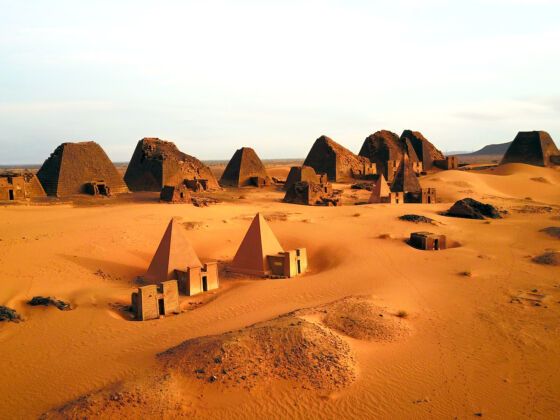
The 7 Coolest Pyramids Not in Egypt
1. Pyramids of Teotihuacan, Mexico
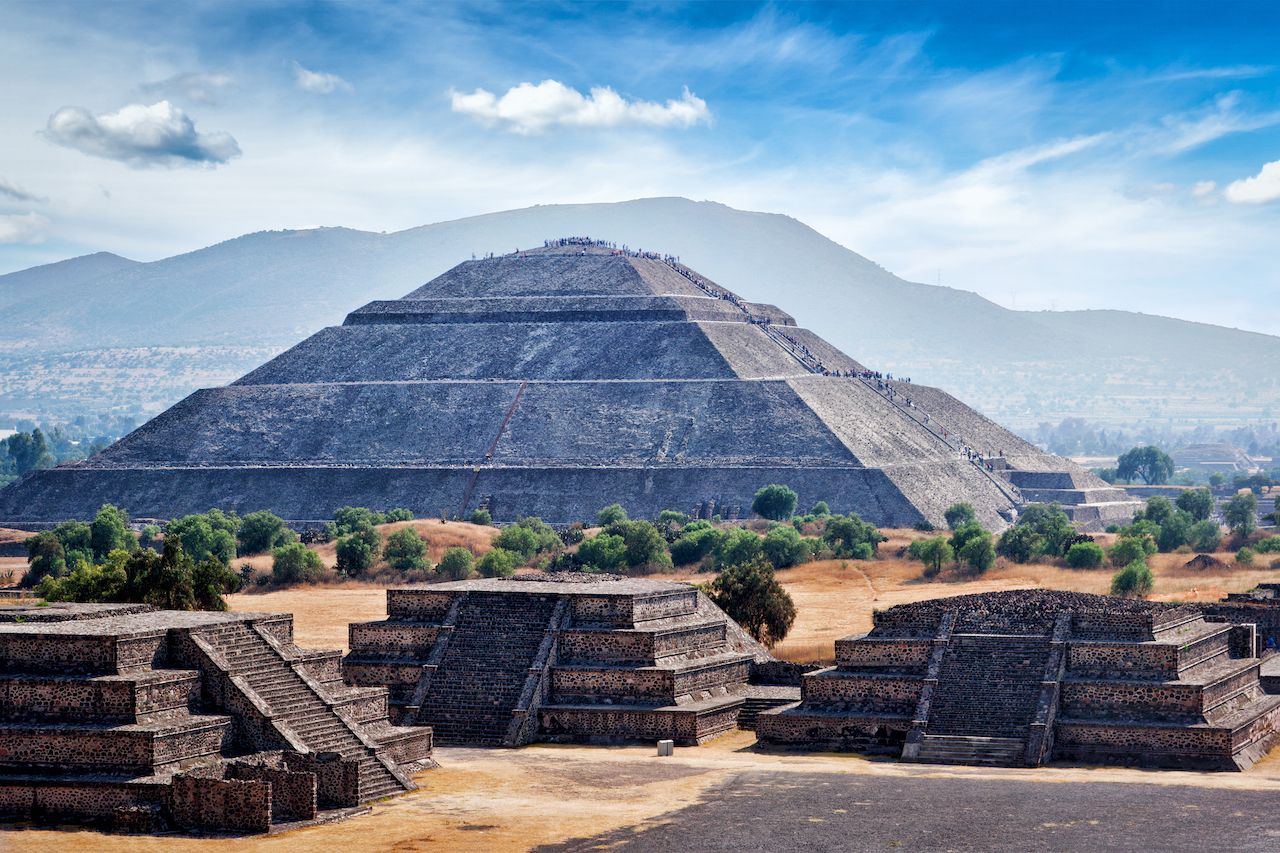
Photo: Dmitry Rukhlenko/Shutterstock
Perhaps the most famous pyramids in the Western Hemisphere are located in what is currently Mexico. Built in the ancient city of Teotihuacan by pre-Columbian peoples, these Mesoamerican pyramids have large foundations but aren’t nearly as tall as those in Egypt. The Pyramid of the Sun — the largest pyramid in Teotihuacan and third largest in the world — is 233 feet tall, about half the height of the Pyramid of Giza. It’s also much newer than the Egyptian pyramids, with construction beginning around 100 AD. Beside it sits the equally impressive Pyramid of the Moon, which was built between 200 AD and 450 AD.
2. Pyramids of Tikal, Guatemala
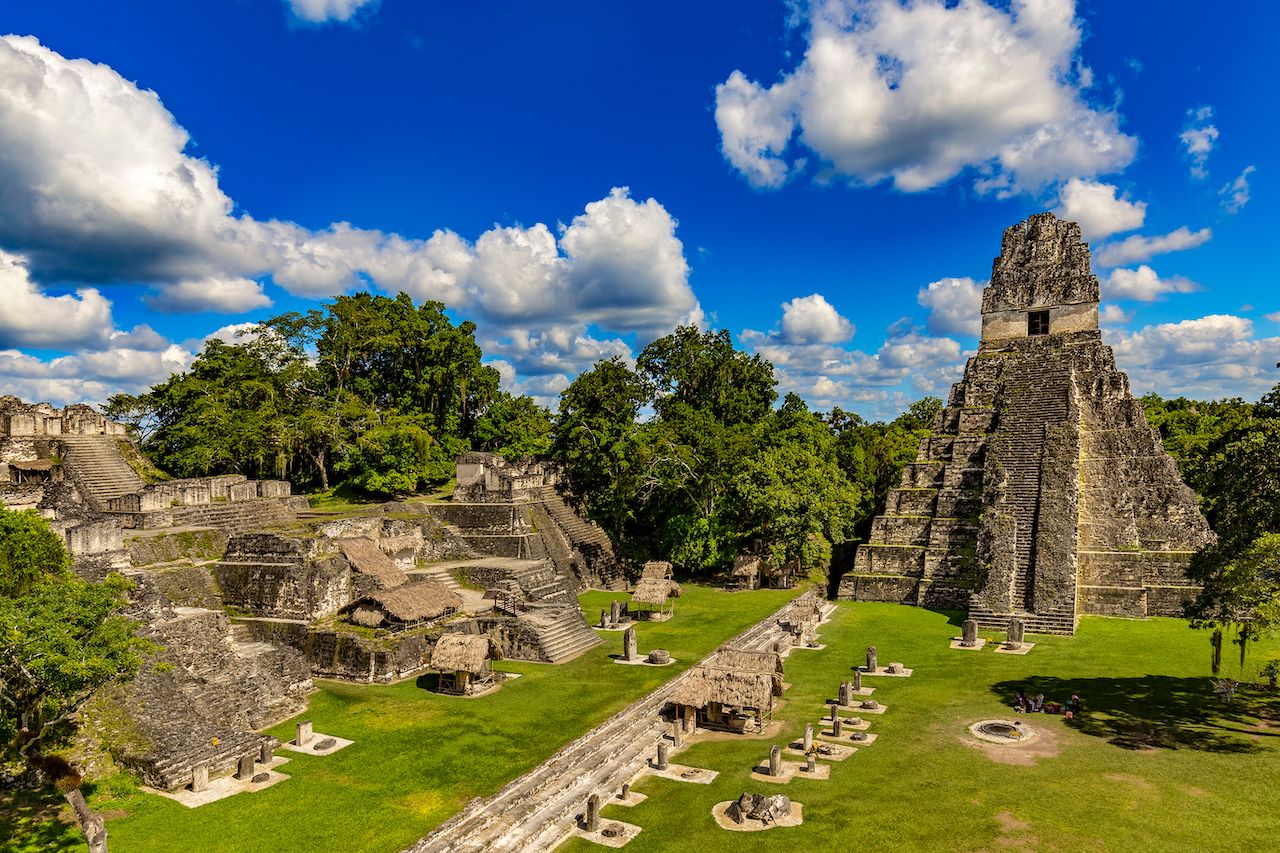
Photo: WitR/Shutterstock
The Pyramids of Tikal in Guatemala are located in a unique setting, scattered throughout the jungle. In this UNESCO World Heritage site, you’ll find five limestone pyramid temples built by the Mayans to honor their gods. They were constructed between 400 to 900 AD and abandoned for nearly 800 years. This neglect certainly shows as the jungle has gradually encroached on the structures. The largest pyramid, Pyramid IV, stands 213 feet high and is topped by the Temple of the Two-Headed Serpent — a great vantage point for a sweeping view of the jungle. The site had served as a ceremonial center mainly containing palaces, temples, and public squares, the remains of which are still visible today.
3. El Castillo, Belize
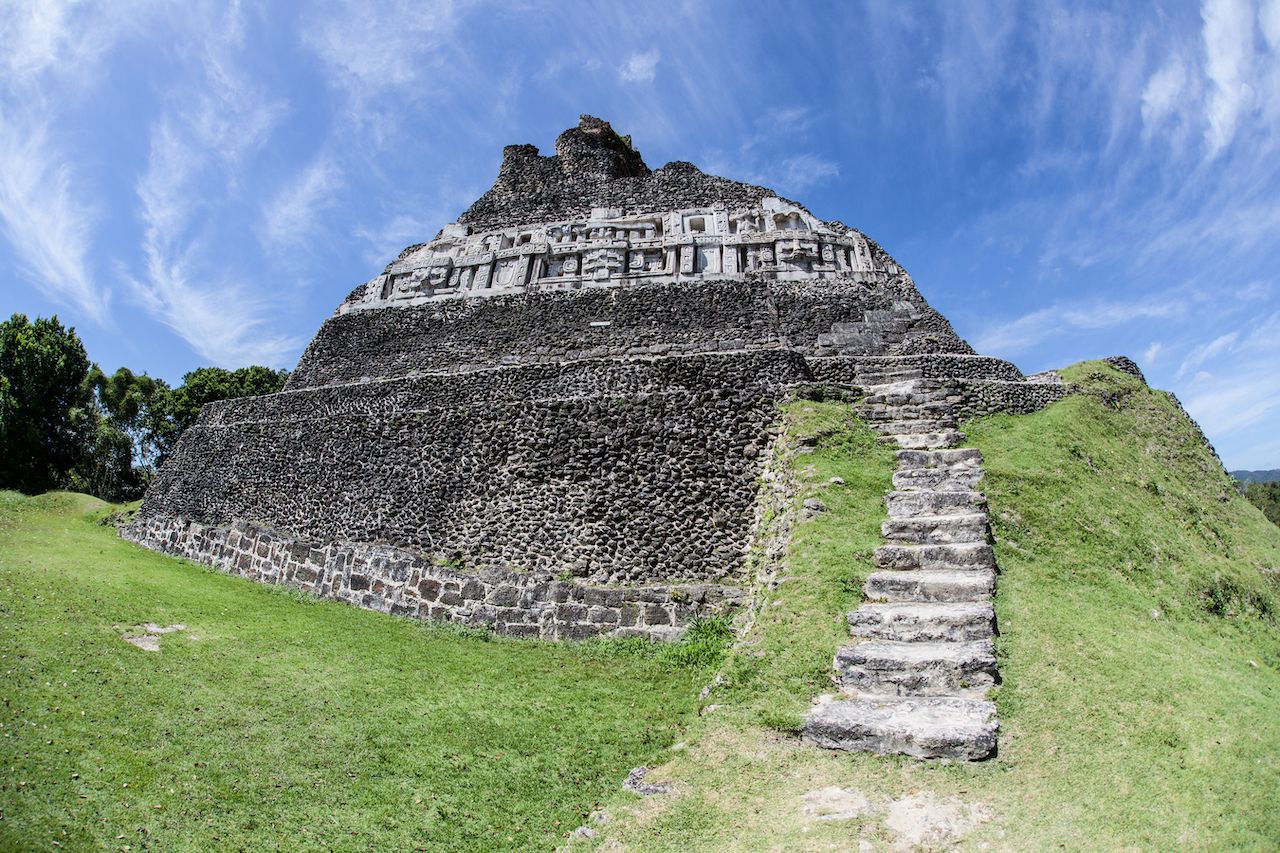
Photo: Ethan Daniels/Shutterstock
El Castillo is the cornerstone of the lost city of Xunantunich, one of the largest Mayan cities ever built. The pyramid itself is located on a ridge over the Mopan River, and at 130-feet tall it’s the second tallest structure in Belize after the temple at Caracol. Built around 800 AD, the pyramid and surrounding city served as a ceremonial center of the Belize Valley region. El Castillo is famous for its resident ghost, known as the “Stone Lady.” First spotted in 1892, she always appears in a flowing white dress, with fiery red eyes, and spends her days ascending the pyramid’s steps before disappearing into one of the stone walls.
4. Nubian Pyramids, Sudan
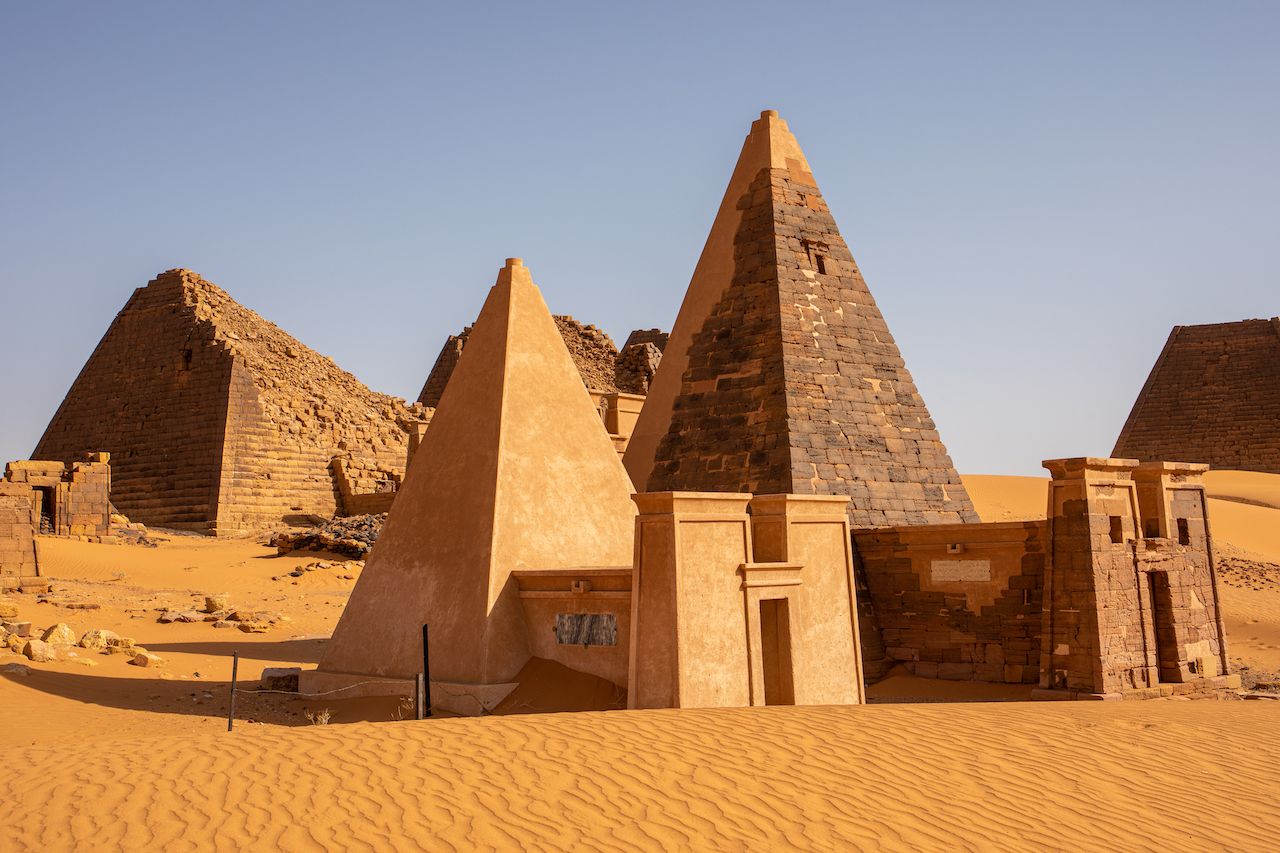
Photo: evenfh/Shutterstock
Sudan took a page right out of its neightbor’s architectural handbook. Located just to the south of Egypt, Sudan’s Nubian pyramids often find themselves in the shadow of their more famous neighbors to the north. Over 250 Nubian pyramids were built between 2600 BC and 300 AD in the ancient cities of Kerma, Napata, and Meroe. Much like the Egyptian pyramids they were used as burial chambers for Nubian rulers and their families. Although similar in height to the Egyptian pyramids, Nubian pyramids have a much smaller foundation and are far narrower. They also distinguish themselves by sheer volume, as there are twice as many Nubian pyramids still standing today as Egyptian ones.
5. Chinese Pyramids, China

Photo: I. Noyan Yilmaz/Shutterstock
The Chinese Pyramids are perhaps the most controversial in name since they don’t look like pyramids at all. In fact, they’re completely disguised as mountains. Used as burial chambers for ancient Chinese emperors from the Qin, Han, and Tang dynasties, Chinese pyramids are earthworks designed to look like burial mounts. Located primarily around the Luoyang and Xi’an regions, their exteriors are covered in earth, grass, and trees so that they resemble hills and mountains. The tomb in Xi’an’s Linton District belonging to Qin Shi Huang, the first Qin Emperor, is the best known as he’s responsible for building the Great Wall of China and uniting the Chinese states in 221 BC. It’s also home to the famous Terracotta Army that guards the tomb.
6. The Great Pyramid of Cholula, Mexico
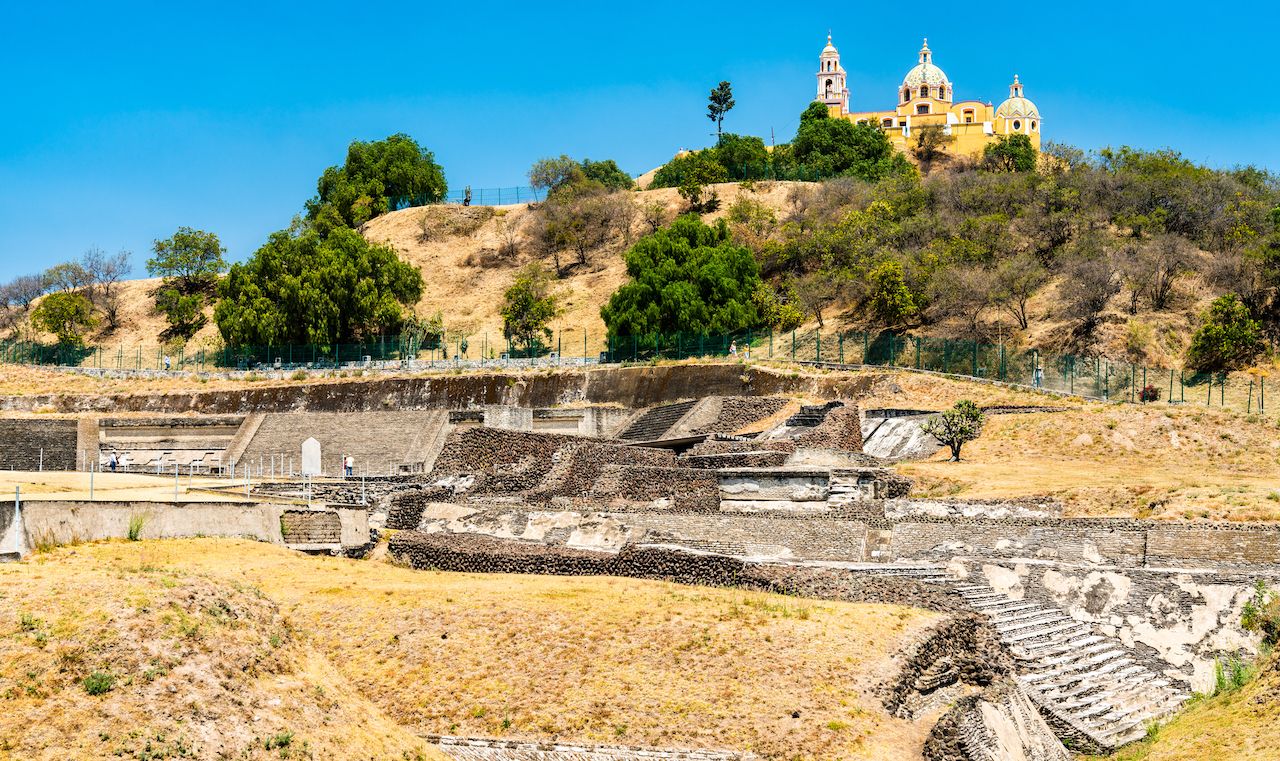
Photo: Leonid Andronov/Shutterstock
Much like the pyramids in China, the Pyramid of Cholula in the Mexican state of Puebla isn’t easily visible to the naked eye. You have to use a bit of imagination. At 173 feet tall and covering 45 acres in width, it’s the largest pyramid in the world, eclipsing even the Great Pyramid of Giza. That makes its ability to stay hidden even more impressive. Built by the pre-Columbian people, it was used by the Aztecs as a temple before falling into disuse. When Spanish colonists arrived in 1509 they saw only a hill covered in soil and foliage and decided to build a chapel at the top. Today, looking for the chapel is the best way to know you’re in the right place. Visitors can explore the ancient subterranean tunnel complex, before emerging at the top to enjoy the view.
7. Ziggurat of Ur, Iraq

Photo: Bildagentur Zoonar GmbH/Shutterstock
The Ziggurat of Ur is one of the world’s oldest pyramid structures, built in the Early Bronze Age around 2100 BC. It was built in the then-Sumerian city of Ur (present-day Iraq) for King Ur Nammu. The 210-foot tiered structure consists of three layers connected by stairs, culminating in a temple at the top. It was originally a piece of a larger temple complex serving as an administrative center for the city and a shrine to the moon god Nanna. The ziggurat shows marks from its ancient past as well as damage sustained in the Gulf War. As a result of the ravages of time, the ziggurat has been restored several times over the centuries, most recently by Saddam Hussein in the 1980s.